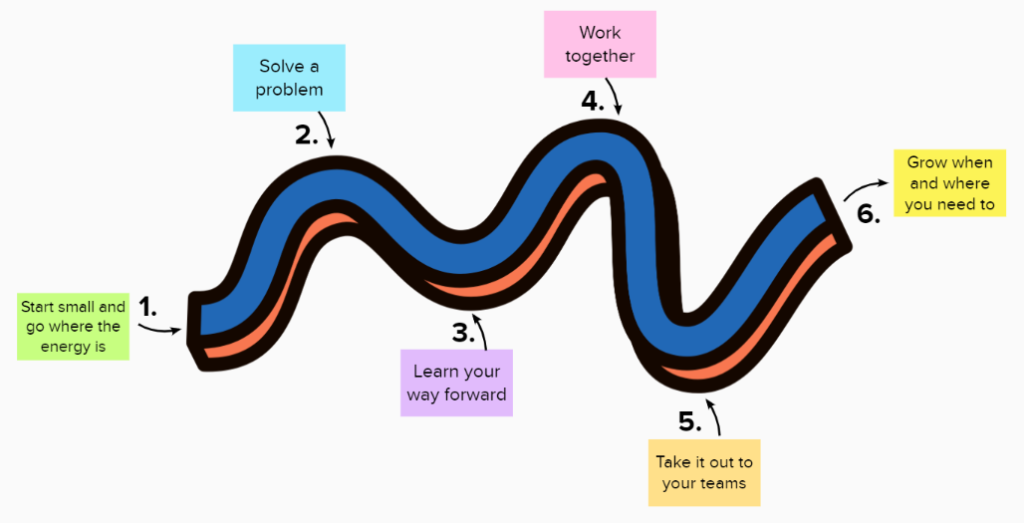How to create a Community of Practice
Creating a Community of Practice is a powerful way to embed new skills and ways of working across your organisation. A community of practice is simply a group of people who come together to discuss and make progress on a common concern, shared set of problems of topic of interest.
Recently, Julia shared the 6 stages of developing a community of practice with our Charity Agile Leaders Club. We were focusing on building one to embed more agile ways of working but these stages will help you to create a working group around any topic.

The six stages
1. Start small, follow the energy
The key here is not to focus on setting it up perfectly. Don’t spend too long agreeing rules and standards. Instead, get started as soon as possible then figure it out as you go.
While having a breadth of skills and interest will help create more opportunities, focus on bringing together interested people rather than forcing a topic or particular attendance. A small group of interested, enthusiastic people will get you much further than a larger less engaged group.
2. Solve a problem
Understand your shared needs and/or challenges. There is no ‘right’ problem to solve. Instead, support the group to agree together what they want from the group. Your focus should be on what you need in order to get your real work done, rather than creating additional work. Focus on solving live problems togther rather than creating new work.
3. Learn your way forwards
Having a structure for your time together will help ensure it’s useful but don’t waste time making rules and processes. The key is to keep trying different approaches. Accept the ‘failure’ of ideas: learn quickly and improving.
Understand your shared needs and/or challenges. There is no ‘right’ problem to solve. Instead, support the group to agree together what they want from the group. Your focus should be on what you need in order to get your real work done, rather than creating additional work.
4. Work together
Communities of practice have the most impact when responsibility is shared across the group, rather than sitting with one person. Aim to collaborate in a democratic and egalitarian way. By making sure everyone is invested in the group’s success it’ll be more likely to succeed!
The power of a community of practice comes from collaboration so aim to find opportunities to collaborate. How can you achieve your aims differently through working together?
5. Take it out to your teams
The aim of your community of practice will likely be to grow expertise in agile or another area across your organisation. The best way to do this is ‘show don’t tell’: demonstrate the value you’re adding through doing real work. Work out in the open and take every opportunity to share what you’re doing before, during and after it’s complete, whether it succeeds or not!
Make your community of practice accessible to anyone – and let them decide if it’s right for them.
6. Grow when and where you need to
Growth alone should not be your goal. Instead, only expand your group or focus in response to increased interest or a new need or problem. For example if new people are interested, the scope of your group increases naturally or you identify a new need.
Don’t waste your effort on growing before you have something that really works.
Communities of Practice in action
Julia also shared 3 examples of communities of practice; each different from the next. This highlights that your aim to create a group that delivers the value that you and your organisation need, and not to just follow a template.




